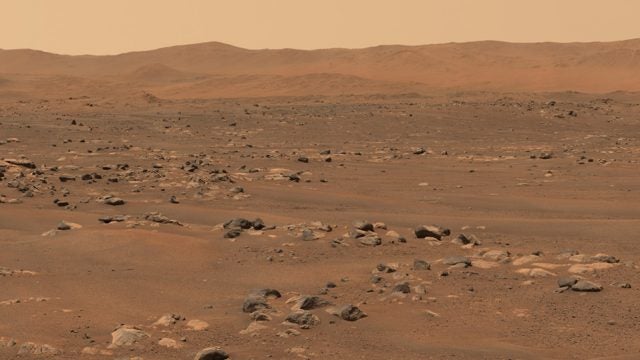
2021-05-05
Mastcam-Z Goes to Congress
Last Thursday (April 29,2021), I was honored to be invited to testify before the House Subcommittee on Space and Aeronautics. Following the excitement of the Perseverance landing, its members, convened by Chairman Rep. Don Beyer (VA-8th), wanted to be briefed on “What Do Scientists Hope to Learn with NASA’s Mars Perseverance Rover?”.
Along with fellow mission team members Luther Beegle (JPL scientist and SHERLOC PI) and Tanja Bosak (MIT professor and Returned Sample Science Co-Lead) as well as Michael Meyer (NASA Lead Scientist for the Mars Exploration Program), we headed to the Hill, figuratively speaking.
You might ask: what’s it like to testify before Congress? Well, very much like a Zoom meeting, complete with a few small audiovisual difficulties. At least during COVID pandemic times. I wish I would have been able to appear in person in the meeting rooms of the Capitol. But Congressional safety protocols – rightly – dictate that most business be remote. Perhaps another time!
I knew a little bit about how this worked because, when I was 21, I had spent a summer working in Washington, DC as an intern with the National Academies Space Studies Board (SSB). (Those summer job skills come in handy sometimes…) One of my occasional duties had been to head to the hearings, when the topic touched on something of interest to the SSB, and take notes to circulate to the staff. So, I knew there was an optional pre-submitted written testimony that became part of the formal record and could be as brief or as detailed as the witness wished. There was also the in person oral statement, which was typically a subset.
I was subbing in a bit last minute for another witness, so I got the informal invitation late afternoon on the Wednesday before, formal invitation Monday AM, with testimony due Tuesday AM. I was asked to speak on science goals of the Mars-2020 mission, how Perseverance will help answer the question of whether Mars may have supported life, why Jezero crater was chosen as the landing site, how the instruments will help enable the scientific investigations, and the science team’s plans for Perseverance’s initial science operations. You know, a few little things. In 5 minutes only.
I knew this was where the written testimony played a key role in enabling more in-depth communication to the members and their staffs. My weekend involved periodic bursts of writing as I thought of what I wanted to say, thought of how to frame it, at what level, and whether to speak more of personal pursuits or big picture programmatic pursuits. Then some frantic polishing very late Monday night as I realized my time to perfect had ticked to zero. I ended up going conversational style, but footnoted with references, leaning on telling the broad story arc of “Why explore Mars?” to “Why this mission?” to “What’s Next for Perseverance?”, sprinkling in a bit of personal history as to how I ended up a part of this grand endeavor. I decided my goals were to convey the scientific importance of the big questions and our team’s enthusiasm, as well as gratitude, for our upcoming exploration. I also wanted to instill pride in the mission by all in attendance – let us not forget, the reason the Perseverance rover is on Mars and we are operating it is that Congress funded and funds Mars-2020. Lastly, I wanted to convey the real *place* that Mars is: somewhere we can and should visit often. <link to my written testimony>
That’s when I asked the Subcommittee staff whether I could show graphics. It’s not traditional, but it is definitely sometimes done and can be very effective, I was told. When I asked, “do you think the members would want to see data from Mars?”, the answer was an enthusiastic yes.
So, I decided to go untraditional with my statement and reached out to Mastcam-Z PI Jim Bell to see what was the most gorgeous Mastcam-Z image that we could share to convey the excitement for the exploration that lies ahead?
It was an easy choice. The product of a lot of hard work by the entire team over multiple sols of acquisition, on sol 63, the final frames of the 110-mm focus Jakob van Zyl memorial site 360-degree panorama hit the ground, marking the panorama complete. Jim readied a quick-look mosaic product that we could share with Congress, creating a beautiful scrolling slide that makes you feel like you’re standing on the surface of Mars and could hike to the crater rim in the distance. It’s 13 cm/pixel! See for yourself by checking out the full-resolution mosaic here on the Mastcam-Z web site’s “Panoramas & Mosaics” page for the Van Zyl Horizon Mosaic.
As Chairman Beyer remarked of the western crater rim, about 10 kilometers distant: “These look like mountains that I would want to climb”. Yes, Congressman, our team wants to climb them too. And Perseverance will.
Bethany Ehlmann is a Professor of Planetary Science and Associate Director of the Keck Institute for Space Studies at Caltech, President of The Planetary Society, and a Co-Investigator on Mastcam-Z. And, courtesy of the Planetary Society, the recording is available easily online here and her slides can be downloaded from here. Her testimony starts at 29:40 and Mastcam-Z steals the show at 34:22. The recording is also available online from C-SPAN here. See also the Caltech news story about her testimony posted here. The part of the full Van Zyl mosaic shown here was featured in a recent NASA/JPL Media Briefing about the success of the Ingenuity helicopter’s tech demo mission.